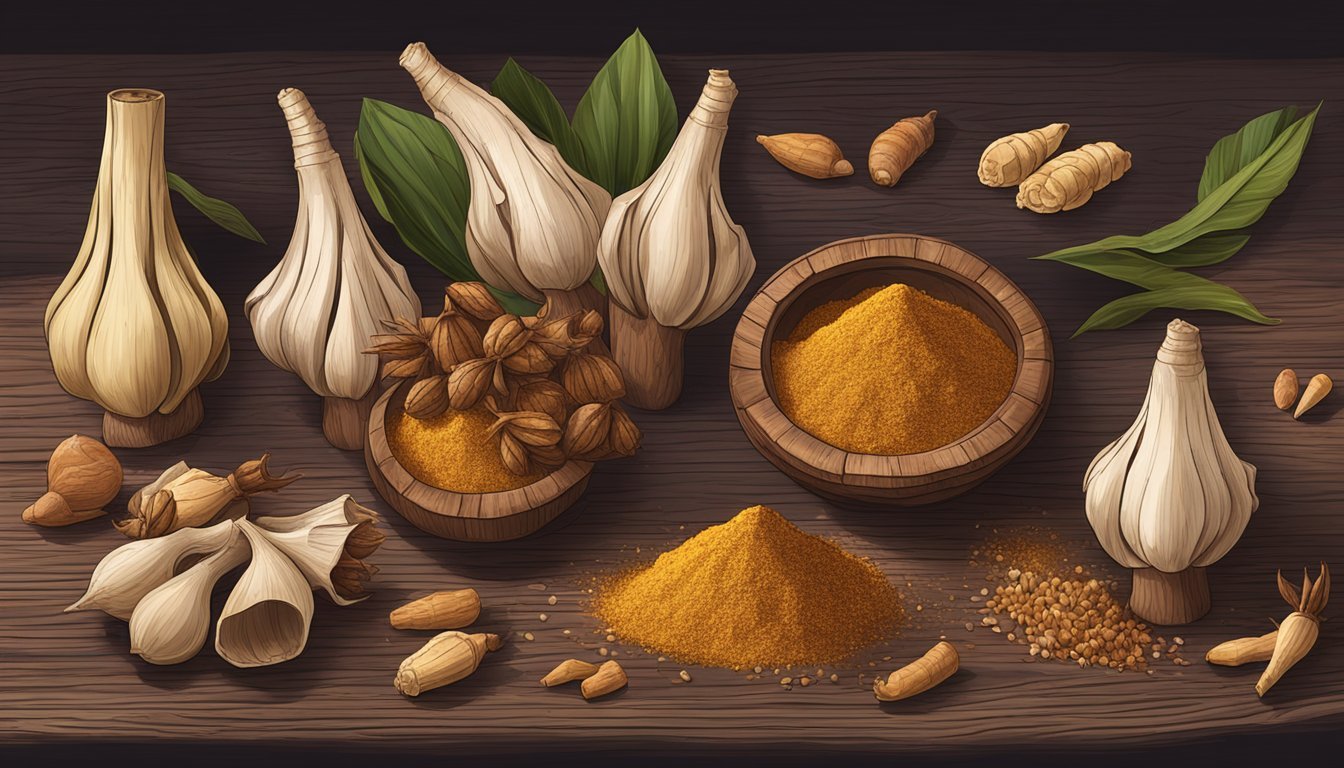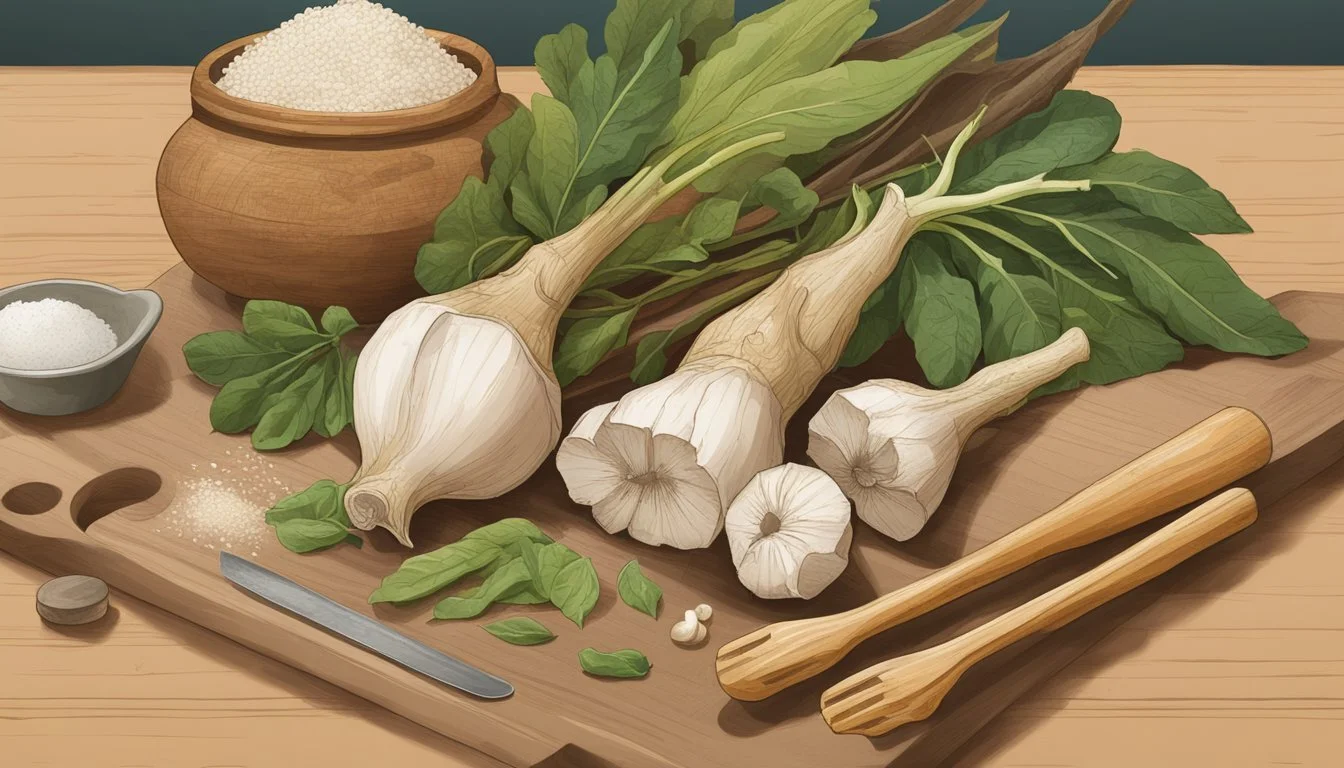Does Galangal Go Bad? How to Tell and Proper Storage Tips
Galangal, a staple in Southeast Asian cuisine, is known for its sharp, citrusy flavor that adds depth to many dishes. But like all fresh produce, galangal can go bad. Fresh galangal that has gone bad will become soft, mushy, and may develop mold. Discoloration, such as dark spots or general browning, also signals spoilage.
For those looking to extend the shelf life of this vibrant spice, dried galangal is a viable option, as it can last for years when stored at room temperature. Fresh galangal, on the other hand, needs refrigeration and typically lasts up to three weeks in the crisper drawer of a fridge. Proper storage techniques, such as freezing or pickling, can also help maintain the flavor and usability of galangal for longer.
Whether you're using fresh or dried, understanding how to store galangal properly ensures that you always have this flavorful spice ready for your culinary adventures. Dive into the details to make the most of your galangal and keep it from spoiling prematurely.
Understanding Galangal
Galangal, a member of the Zingiberaceae family, is a spice that has culinary, medicinal, and nutritional significance. Commonly used in Southeast Asian cuisines like Thai and Indonesian, it is celebrated for its unique flavor and health benefits.
Origins and Varieties
Galangal originates from Southeast Asia, with a significant presence in Thai, Indonesian, Malaysian, and Chinese cuisines.
There are two primary varieties: greater galangal (Alpinia galanga) and lesser galangal (Alpinia officinarum). Greater galangal has larger, tougher roots, while lesser galangal's roots are slender and more aromatic. Both varieties belong to the ginger family, sharing a similar, though distinct, flavor profile.
Culinary Uses
In culinary applications, fresh galangal is valued for its robust, spicy flavor with notes of citrus and pine.
It is often used in Thai dishes like tom yum soup and Indonesian curries. Fresh galangal is typically sliced or pounded before adding to recipes. Dried and powdered galangal are also used but require soaking due to their woody texture.
Nutritional Profile
Galangal is packed with nutrients and offers several health benefits.
It contains antioxidants, such as polyphenols, that protect against oxidative stress. The root also has anti-inflammatory properties and contains essential vitamins and minerals. Research suggests potential benefits in cancer prevention, thanks to its complex chemical composition.
Proper storage, like freezing or refrigeration, ensures galangal retains its nutritional value.
Galangal vs. Related Spices
Galangal shares similarities with other popular rhizomes like ginger and turmeric, but it also has unique characteristics. Understanding these differences can help in selecting the right spice for your dish and finding suitable substitutes.
Comparison with Ginger and Turmeric
Galangal is often compared to ginger and turmeric due to their similar appearances and botanical relations.
Appearance: Fresh galangal is tan with light rings, whereas ginger has a more uniform tan skin. Turmeric stands out with its darker brown skin and orange flesh.
Flavor: Galangal offers a sharp, citrusy taste with hints of pine and pepper. Ginger provides a spicy, slightly sweet flavor, while turmeric's taste is earthy and mildly bitter.
Usage: In cooking, galangal is used in many Southeast Asian dishes, ginger in various global cuisines, and turmeric mainly in Indian and Middle Eastern cuisine.
Substitutes and Similar Flavors
When galangal is not available, some spices can substitute it but with varying results.
Ginger: Its spicy yet sweet profile can mimic the taste of galangal but without the citrus and pine notes.
Turmeric: While it can replicate the earthiness, it lacks the sharp and peppery undertones of galangal.
Lemongrass: Adds a similar citrus flavor found in galangal, though it is more herbaceous.
In recipes, using a combination of these substitutes may achieve a closer match to galangal’s unique flavor. Always consider the primary taste characteristics required for your dish when choosing a substitute.
Storing Galangal
Proper storage of galangal extends its shelf life and preserves its flavor and potency. Different methods are recommended for fresh and dried or powdered forms to maintain quality.
Fresh Galangal Storage
Fresh galangal should be stored in a cool, dry place away from direct sunlight. For short-term storage, refrigerate it in a plastic bag or wrap it in damp paper towels; it can last up to three weeks this way.
If freezing, place the entire rhizome or sliced portions in resealable freezer bags. Remove as much air as possible to prevent freezer burn. Frozen galangal can last up to six months and retains much of its original flavor and texture.
Dried and Powdered Galangal Storage
Dried galangal needs to be stored in an airtight container to protect it from moisture and light. Keep it in a cool, dark pantry to maximize its shelf life, which can extend well beyond a year if conditions are optimal.
Powdered galangal should also be kept in an airtight container in a dark place. Ensure the container is sealed after each use to maintain the potency of its flavors and aromas. These methods help ensure the spice remains effective for culinary use for several months.
Signs of Spoilage
Detecting spoilage in galangal is crucial to ensuring its safe use in recipes. Spoiled galangal often shows specific visual, texture, aroma, and taste changes.
Visual and Texture Changes
Changes in the texture and appearance of galangal root can indicate spoilage.
Fresh galangal should have a firm, crisp texture. If it becomes soft or mushy, this is a clear sign it has gone bad. Mold is another obvious indicator. Fresh galangal may develop dark spots or a general browning as it spoils.
In addition to mold, dried galangal losing its hardness and becoming brittle can also signal that it has lost its flavor and quality. Another concern is shriveling, often due to improper storage conditions. An ideal humidity of 75-85% helps avoid this issue.
Aroma and Taste Alterations
The aroma and taste of galangal are vital indicators of its freshness.
Normally, galangal has a sharp, spicy fragrance. If the smell becomes off or sour, it is likely spoiled. Changes in aroma often precede visible spoilage, making it an early indicator.
The taste of fresh galangal is pungent and slightly peppery. If it starts tasting bland, bitter, or otherwise off, it should not be used in cooking. These changes can be pronounced in both fresh and dried variations. Always evaluate the aroma and taste before using stored galangal.
Health Benefits and Risks
Galangal root offers several health benefits due to its rich antioxidant content and potential anti-inflammatory properties. While it may provide numerous advantages, consumers should also be aware of possible side effects.
Culinary and Medicinal Advantages
Galangal root is rich in antioxidants, particularly polyphenols, which can help reduce oxidative stress. These antioxidants protect cells from damage and may reduce the risk of certain types of cancer such as breast and colon cancer.
The root has been shown to possess anti-inflammatory properties, making it useful in treating conditions like osteoarthritis and knee pain.
Studies suggest that galangal root may boost male fertility and improve memory. Its potential ability to lower blood sugar levels could help manage type 2 diabetes and reduce the risk of heart disease.
Moreover, galangin, a compound found in galangal, has demonstrated significant anticancer activities, notably against leukemia and liver cancer.
Potential Side Effects
While galangal root is generally safe, some individuals may experience side effects. Allergic reactions can occur, manifesting as skin irritation or respiratory issues in sensitive individuals.
Ingesting large amounts of galangal might lead to gastrointestinal issues such as stomach upset or diarrhea.
People with existing heart conditions should exercise caution, as its blood-thinning properties could interfere with medication. Pregnant or breastfeeding women should consult healthcare professionals before consuming galangal supplements or essential oils.
Due to its influence on blood sugar levels, individuals with diabetes should monitor their blood sugar closely when incorporating galangal into their diet. As always, it's advisable to seek medical advice before starting any new dietary supplement.
Galangal in Cooking
Galangal, a rhizome in the ginger family, is essential in many Southeast Asian cuisines. Found fresh, dried, or powdered, it adds a peppery spice with citrusy notes to dishes from Thailand, Indonesia, and Malaysia.
Recipes Featuring Galangal
Galangal enhances the flavors of various soups and curries, such as tom yum and tom kha gai, two iconic Thai dishes.
In tom yum, it provides a sharp, spicy undertone that balances the soup's sour and savory elements. Tom kha gai, a coconut milk-based soup, uses fresh galangal to contribute a warm, earthy note that pairs well with lemongrass and kaffir lime leaves.
In Indonesian and Malaysian cooking, galangal is often included in rendang, a rich, slow-cooked beef curry. Additionally, it adds depth to stir-fries and marinades, balancing other robust ingredients like garlic and chili.
Making Pastes and Sauces
Galangal is vital in creating aromatic pastes and sauces, commonly used in Southeast Asian recipes. To prepare a galangal-based curry paste, the fresh rhizome is typically combined with garlic, chili, shallots, and lemongrass, then ground to a smooth consistency using a mortar and pestle.
This paste forms the base for many curries, contributing an intense, layered flavor profile.
For sauces, galangal is minced or ground and blended with soy sauce, tamarind, or fish sauce to enhance both vegetarian and meat dishes. Preparing these pastes and sauces correctly ensures that the complex flavors of galangal are fully developed and integrated. The end result is a rich, flavorful addition to any dish that benefits from its distinctive, spicy-citrus character.
Purchasing and Finding Galangal
Finding fresh or dried galangal is relatively straightforward with a mix of local and online options. This section guides you through where to shop for galangal, whether at a nearby store or from the comfort of your home.
Shopping for Galangal Locally
Local marketplaces, especially Asian markets, are prime spots for finding fresh galangal. Asian grocery stores often stock galangal roots, which can be located in the produce section alongside other fresh herbs and spices. When selecting galangal, look for firm, plump roots with smooth skin, avoiding any that are shriveled or moldy.
Some mainstream supermarkets, such as Walmart, also carry galangal, typically in the produce or international foods aisle. Checking the store’s online inventory ahead of time can save you a trip if your local branch doesn’t stock it regularly.
Buying Galangal Online
For those unable to find galangal locally or who prefer the convenience of online shopping, there are several reliable options. Amazon is a popular choice, offering a wide array of both fresh and dried galangal. Customers can view reviews and ratings to ensure they are purchasing quality products.
Another option is specialized online herb retailers that often provide better quality and more consistent freshness. While shopping online, it's essential to pay attention to the shipping times and storage recommendations to ensure the product maintains its freshness upon arrival.
Galangal and Food Safety
Galangal is known for its potential health benefits and its ability to enhance the flavor of dishes. In terms of food safety, it's important to examine how galangal interacts with microorganisms and its inherent anti-microbial properties.
Microorganism Resistance
Galangal can spoil and harbor harmful microorganisms if not stored properly. E. coli, vibriosis, salmonella typhi, and other pathogens can pose health risks.
To minimize these risks, it's crucial to refrigerate fresh galangal, extending its shelf life up to three weeks.
Paste forms of galangal have limited stability and should be refrigerated after opening. This measure helps prevent the growth of mold, fungi, and parasites.
Proper storage conditions such as freezing can also halt the proliferation of harmful bacteria and fungi.
Anti-Microbial Properties
Galangal possesses notable anti-microbial and anti-fungal properties. It has been shown to inhibit the growth of both bacteria and fungi.
Laboratory studies suggest that galangal extracts can combat E. coli, salmonella typhi, and even some parasitic infections.
Galangal's compounds may bolster the body's defense against these microorganisms.
Additionally, galangal has shown promise in targeting specific cancer cells, such as colon cancer cells, and boosting brain function and sperm count.
These benefits align well with traditional Ayurvedic practices that utilize galangal for its health-promoting properties.









